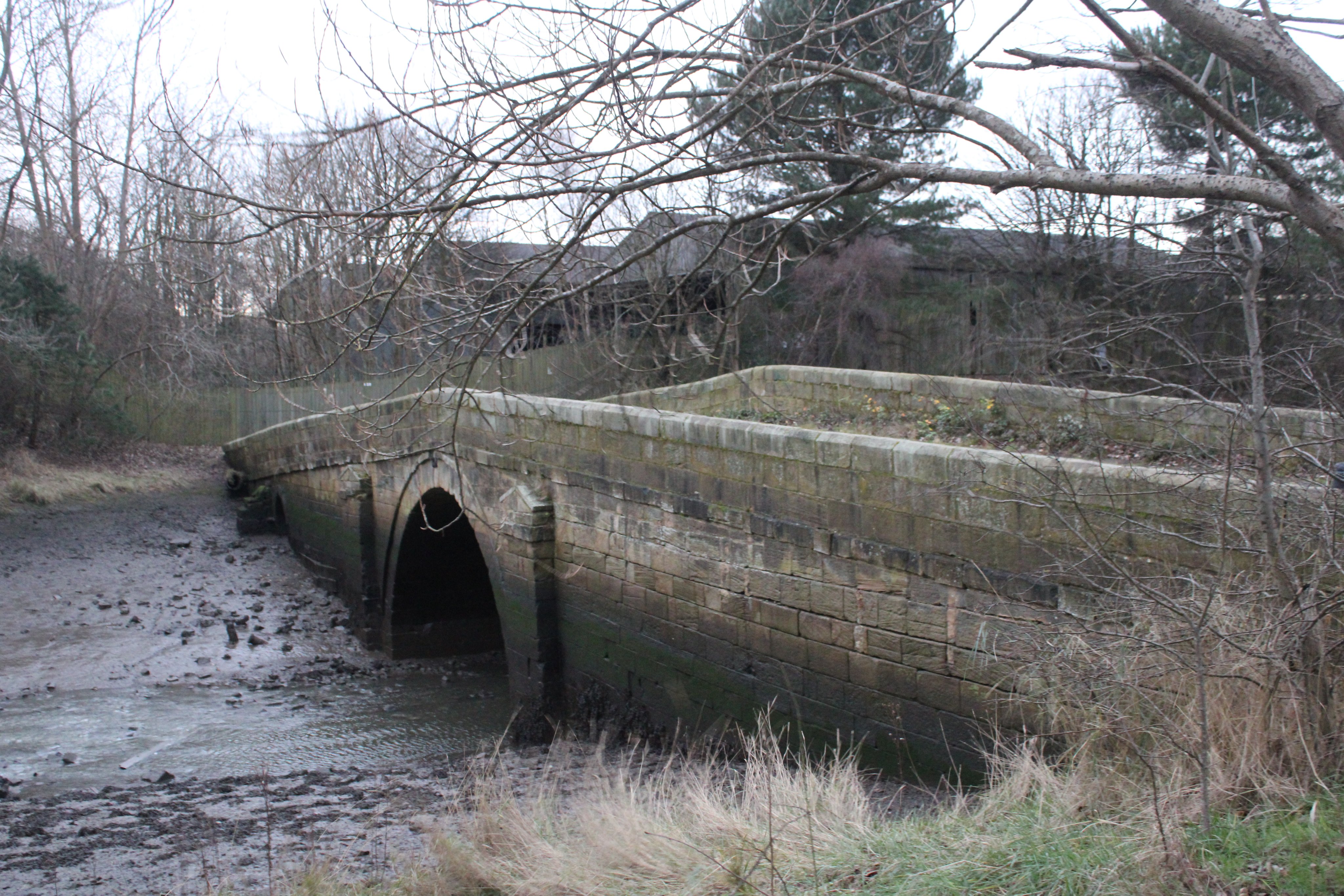
Jarrow
Jarrow Bridge
Last Updated:
24 Dec 2024
Jarrow
This is a
Bridge
54.979716, -1.471287
Founded in
Current status is
Extant
Designer (if known):

Listed Grade II
This is Jarrow's Don Bridge, now a bridge to nowhere but once an important artery on the turnpike network.
Despite it being a bit of an oddity today, it still forms an integral part of old Jarrow with the monastery and church peering over. Though we don't know its exact age, it could well date from the late 17th century when the Slake was first industrialised. This is from before the turnpike, but may have formed the important historic route from Jarrow Monastery & St Paul's to Monkwearmouth.
At this time though the bridge was around half its size - basically a footbridge, but was repaired by William Allison, a mason, and later widened for the turnpike. This will have allowed for wagons and horses to make use of the bridge. I'm fairly sure this particular turnpike was to allow access to East Jarrow to circumvent the long detour to Monkton. It doesn't appear the Don was fordable. In 1852, the tolls produced £370 which will have maintained the bridge and the road itself. That's about £35k today.
Many may know the IRA planted a bomb on the bridge in 1921. Jarrow was a hotbed of radical Irish politics, and with that came a spate of arson & bomb attacks at Jarrow, the Boldon's and South Shields. An explosive devise was planted here to destroy the gas mains which crossed it, but they were swiftly repaired.
The bridge was bypassed in 1938 for a modern road bridge, and since has remained an antique of Old Jarrow. It was restored in 1999, and is probably due a bit of TLC again.
Listing Description (if available)


The two maps shown illustrate old Jarrow from the 1850s to the 1910s. Jarrow Bridge formed the southern entrance of the settlement until the construction of a bypass, which can be seen on the 1918 map with the single track tramway.
This used to be a little community in itself. In fact, given the location it's probable the oldest part of Jarrow. In more recent memory though there was a cluster of 18th century buildings here which were a mixture of cottages and an inn. By the 1890s, there was a hotel here as well as a small Sunday school and a boys school. We're going to go in a bit more detail with the latter.
The Bede Church School was opened here in around 1859. It was a national school, meaning the curriculum and teaching was provided by the Church of England to facilitate basic primary education for the poor. They cropped up in most industrial areas as a means to promote some level of literacy and numeracy skills as well as sow the seeds of faith from a young age.
From the outset the setting was cramped. It was a little rectangular building next to the monastery which did grow by the 1890s possibly with an extra room. Speculating here, but with the modernisation of education and the state later providing, I think this became the Sunday school.
There was also another school which appeared by the 1890s, which I think was St Bede's School opened in 1872 and shown in the last shot. It hosted 112 pupils and constantly suffered from shortages as kids were hungry, without shoes and adequate clothing. They were constantly giving out meals and shows to kids, as well as closing due to illness.
All these buildings were cleared by the middle of the 20th century, and now we're left with this mound probably featuring some remnants of these buildings.

The first striking comparison on this 1946 map compared with the elders is the density. The early 20th century saw Jarrow become increasingly dense with industry and housing. Rows of terraces encroached this side of the town by the 20s, though some industries had rationalised including the Straker Street Chemical Works. Jarrow Bridge still played a minor road in urban life, but was no longer a primary access for St Paul's but a novelty on an empty lane.

Jarrow Bridge in December 2024

The north end of the bridge and old Jarrow around the 20s or 30s. Unknown original source.

© Historic England. Aerofilms Collection EPW048221 flown July 1935
